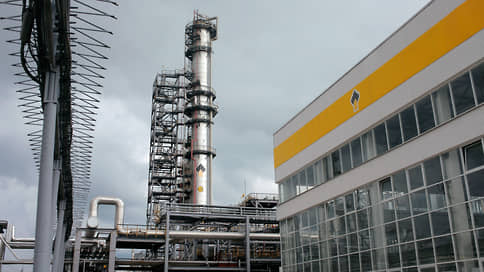Drone attacks hit oil refineries in the Volga region for the first time
[ad_1]

Drone attacks hit oil refineries in the Volga region for the first time. As a result of the attacks, one of the refineries of the Samara group of Rosneft was damaged (MOEX: ROSN) – Syzransky. According to Kommersant, the damage was caused to a primary oil refining installation. According to experts, the company will now have to redirect the flow of raw materials from other plants of the Samara and Ufa groups in order to minimize the reduction in the output of petroleum products.
Ukrainian drone for the first time attacked Refinery in the Volga region: On March 16, damage was caused to the Syzran Refinery, which is part of the Samara group of Rosneft plants along with Kuibyshev and Novokuibyshev. On the same day, regional authorities reported an attempted drone attack on the Novokuybyshevsk oil refinery, but it was stopped.
As a result of the drone hit, according to Kommersant’s information, the only operating primary oil refining unit (AVT-6) at the Syzran Oil Refinery was stopped; its design capacity is 8.9 million tons of oil per year.
AVT-6 accounts for more than 67% of the plant’s total primary processing capacity.
The refinery also has a second primary processing unit, which, according to Kommersant, has been idle for a long time – since July 2023. According to the repair schedule, this installation was supposed to be restarted before the beginning of April, but the date may be pushed back.
In 2023, the Syzran Refinery processed 7.1 million tons of oil, producing 981.1 thousand tons of gasoline (2.7 thousand tons per day) and about 1.8 million tons of diesel fuel (4.9 thousand tons per day). In the first ten days of March, the plant produced 2 thousand tons of gasoline per day, which is equivalent to 1.7% of domestic gasoline consumption in the Russian Federation, as well as 4.4 thousand tons of diesel fuel per day (about 2.9% of consumption). The Syzran refinery is primarily designed for the production of diesel fuel, notes Victor Katona from Kpler.
Against the backdrop of drone attacks at refineries in Central Russia, the exchange price of fuel last week greweven despite the moratorium on gasoline exports introduced in March.
The situation may worsen after the Moscow Refinery, which is key to providing fuel to the capital region, will undergo scheduled maintenance in the near future. According to Kommersant, a shift in the repair schedule is not yet being discussed.
The Ministry of Energy, however, does not expect a fuel shortage. “We cover all the needs of the domestic market. There are no risks here. Therefore, any speculation that we will have a deficit is untrue,” claimed last week, first deputy head of the Ministry of Energy Pavel Sorokin.
There is no certainty that the AVT-5 unit at the Syzran Oil Refinery will be returned to operation at the end of March, believes Sergei Kondratyev from the Institute of Energy and Finance; the plant only summed up the results of the competition for the overhaul of this unit at the end of February.
The removal of AVT-6 for repairs means a formal loss of 67% of the plant’s primary processing capacity (and taking into account the downtime of AVT-5 – 100%), he adds. According to Mr. Kondratyev, the plant can be loaded at the expense of other refineries of the Samara group: in January 2024, the primary oil refining capacity at the Kuibyshev Refinery was 65% loaded, at the Novokuibyshev Refinery – 70%. If the primary refining capacity at these refineries is increased to 95% of the installed capacity, this will allow the Syzran refinery to maintain its load at the same level as before the attack. “Of course, this is a very speculative calculation – there are important issues of logistics and changes in supply management,” the expert notes. “But, as far as I know, Rosneft has such experience in “transferring” raw materials to both the Ufa and Samara groups.”
[ad_2]
Source link





